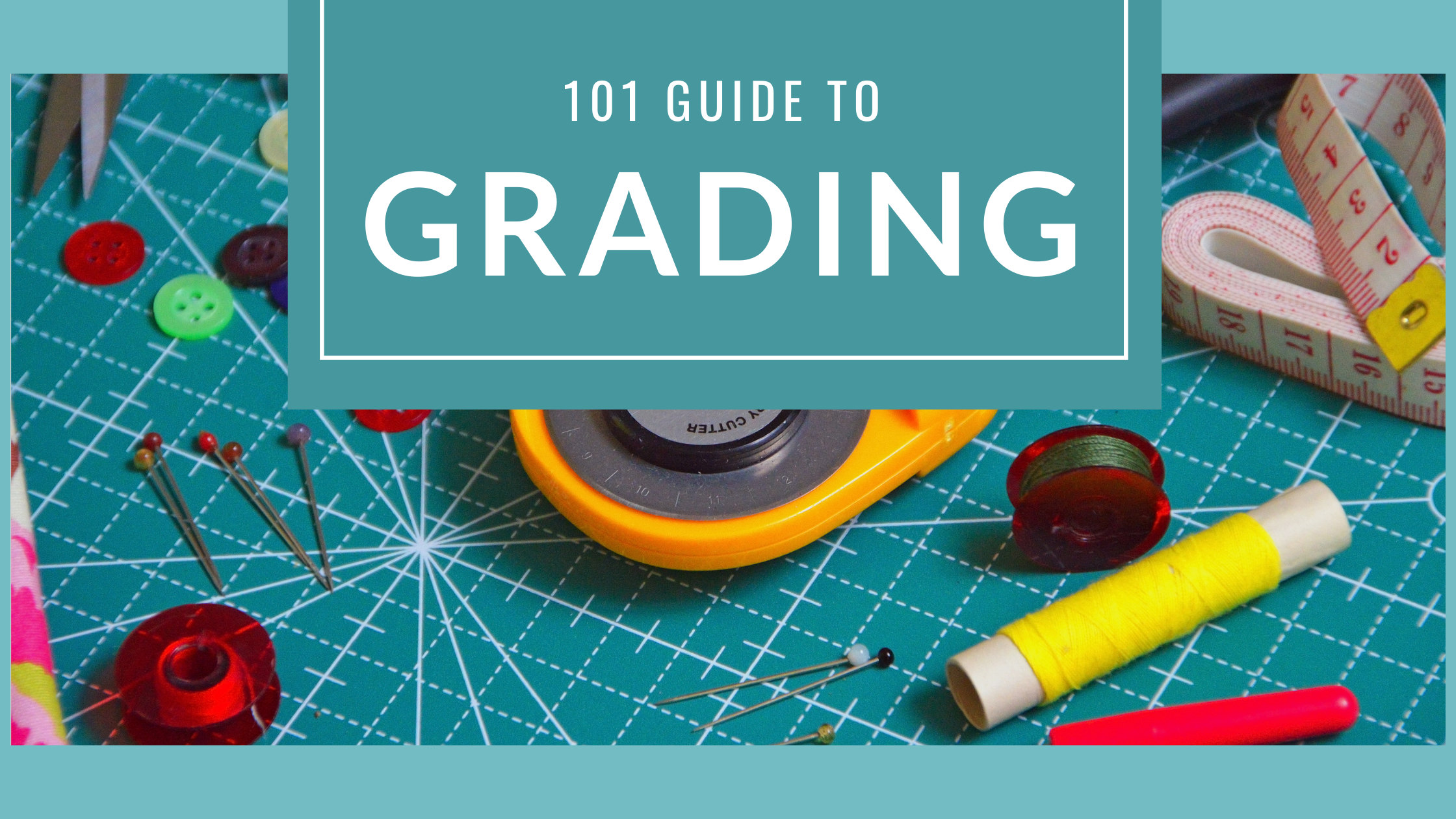2020

The fashion industry has started to rewrite the rules when it comes to the one-size-fits-all formula, by embracing women of all body types – and with the right tools to hand, plus a little technical know-how, you can learn how to tailor a pattern to flatter your figure, too. For most of us, there’s usually a few occasions where we know a style just won’t sit quite right and needs to be taken up or down a size or two – but not to worry! We’ve teamed up with our stitching experts to collate an easy and informative guide to grading to help you resize a pattern with ease.
What is Grading?

For many of us, the term ‘pattern grading’ conjures up an image of fancy tools and complex measurements, but it doesn’t have to be as strenuous as it sounds. On the contrary, once you’ve mastered the basic techniques there will be no stopping you from taking your sewing to the next level! If you’re struggling to find a pattern which covers your size, then grading it yourself is a great option. There are three main methods for resizing, including cut and spread, pattern shifting and computer grading. With the first technique, you have to cut and spread the pieces for grading up, or overlap them to grade down. To use the pattern shifting method, you must increase the dimensions of the pieces by moving them a measured distance up, down, left and right, then redraw the outline. The final method is the quickest, but it’s only usually done by manufacturers that can afford the software required.
How to Shape Smart…

Before you do anything, remember that taking accurate body measurements is key, as our expert designer Sarah Oecken explains: “I think most dressmakers agree that one of the single hardest things is getting the fit right. Most commercial patterns are not equivalent to the sizes we get off the peg, so the first step to grading is to take accurate body measurements. Start with your hips, bust and waist, then compare these measurements to those on the back of the envelope. At this point, you may find that you straddle dress sizes; for example, your waist might be a 12 and your hips a 14.
“The actual finished measurements of the garment, including the amount of ease, is usually written on the pattern pieces, so use this to check the final fit. If you still find that you need to alter it, then it’s time to grade the pattern pieces. So, using a tape measure, calculate the final measurement you require so that the garment sits comfortably. “Now you need to take this additional amount and add on a 1.5cm seam allowance. This amount needs to be divided equally between the pattern piece side seams. So, if you have a skirt with a front and back piece, you need to divide the extra amount, plus the seam allowances, between the four side seams. For example, if you have an additional 4cm, you have to add this to a 6cm seam allowance and divide this evenly between the four seams which equates to 2.5cm each.”
“Using pattern paper, attach this to the pattern that is cut to the closest size you require and carefully mark out the new cutting line. If your measurements span across different sizes for the waist and bust for instance, then you’ll need to grade gradually from each area so that you blend the sizes. Remember to make sure you work incrementally to the existing grade lines and don’t alter the shape of the garment.”
Wise Words

Stitching guru Lorna Knight, founder of lornaknight.com, is here to share her wise words…
- When pattern grading, it’s always a good idea to use a newly sharpened 2H pencil to mark all of the points, as the fine line ensures a more accurate measurement. A thicker line, made with a soft lead pencil, is more difficult to work with because then you won’t know whether to measure from the centre or the edge.
- A short 15cm ruler is an easier tool to use than a longer one, especially when drawing guidelines through pattern points and corners. This will enable you to grade quickly and efficiently around each piece.
- A French curve ruler is a great tool that allows you to draw perfectly smooth curves when pattern drafting and grading. Another useful feature with this ruler is that it comes with a grid of straight and curved lines, which are really handy when it comes to lining up a pattern piece. All you need to do is place the curve, printed on the ruler, over the curve on the pattern, then use the edge to draw a line around it at the required distance from the original size.
Tips and Tricks

The fantastic Amanda Walker is on hand to share her tips and tricks…
- I usually draft the original pattern onto thin card, as this enables you to create exact curves and markings from the master pattern.
- If you’re new to grading, then an easy project to start with is a pencil skirt, as all you need to do is add the extra measurement through the centre front and back. Just remember that the front pattern piece is a quarter of the complete skirt, and the additional measurement for the back part will need to be divided by four.
- Before cutting the fabric, check that the pattern fits together perfectly. Plus, I’d also recommend making a calico sample first, as garments can become distorted when you increase or decrease them by a large amount. If you do this, then you’ll be able to tweak any parts you’re not happy with without wasting any fabric.
Now that you have got to grips with grading, why not take a look at our fabulous selection of patterns? Click here for endless inspiration and for a selection of styles that you can grade to achieve the perfect fit.
New this week
.jpg)
Quick Quilting & Patchwork Patterns and Inspiration
9 Apr 2025
[includes sponsored content] From small pieced projects to statement throws, these patterns and products…

Easy Ways To Get Kids Sewing!
11 Mar 2025
[contains sponsored content] Share your love of sewing with a young one and give…

Creative Book Awards 2025 Shortlist Unveiled!
17 Jan 2025
Welcome to the Creative Book Awards 2025! Since launching in 2021, these awards…
